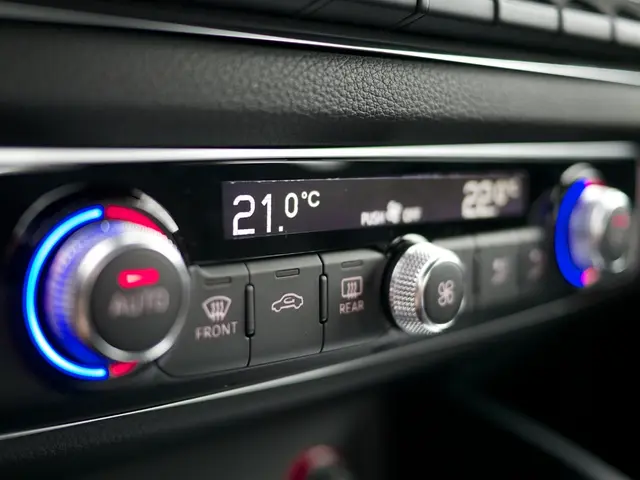Assessment: Everybody should covet the impressive RedCat 91 refractor, according to the latest review
**William Optics RedCat 91: A Portable, High-Performance Wide-Field Imaging Refractor**
The William Optics RedCat 91, a 91mm f/4.9 astronomical imaging refractor, stands out as a versatile and efficient choice for astrophotographers seeking a wide-field imaging solution. Its unique features make it an ideal companion for both field use and semi-permanent observatory setups.
One of the RedCat 91's key advantages is its fast focal ratio, which lends itself to capturing images with shorter exposure times, making it a speedy photographic system. The RedCat 91 utilises the Petzval design, eliminating the need for special flatteners and their associated issues, ensuring a nice flat field without the need for additional equipment.
When it comes to guiding, the **William Optics Guiding Scope 50mm f/4.0** is the recommended option. This guide scope matches well in terms of optical quality and form factor with the RedCat 91, providing effective autoguiding capability when paired with compatible guide cameras. Although the RedCat 91 does not come with an external guide scope, William Optics offers a free promotional 32mm UniGuide. However, for star focusing, a larger 50mm UniGuide is recommended due to the 32mm UniGuide's potential challenges.
The RedCat 91's portability is another significant selling point, with a size of less than 22 inches (56 centimeters) long and a weight that makes it easy to carry. This makes it an excellent choice for those who value mobility in their equipment.
The RedCat 91 comes equipped with two imaging camera adapters: an M54 for full-frame sensor cameras and an M48 for APS-C sized sensor cameras. These adapters also provide T-mount support. The telescope's 55mm image circle easily covers a full frame sensor, ensuring comprehensive coverage for your imaging needs.
In terms of performance, the RedCat 91 has proven itself capable of capturing impressive images. For instance, it was used to image the Seagull Nebula (IC 2177) in RGB, Hydrogen-alpha (Hα), and Oxygen-III (OIII) light frames, resulting in an image with fine structural details visible only in narrowband light. The stars remained perfectly round across the entire field of the RedCat 91's image, further highlighting its quality.
The RedCat 91 also offers potential for use as a semi-permanent observatory telescope or part of a robotic imaging system in a backyard observatory or remotely hosted observatory. It comes mounted in a ring system with a Vixen dovetail plate on the bottom and a handle on the top for easy carrying.
Lastly, the RedCat 91's manual is available online as a PDF file, covering all aspects of the scope and external device usage. However, it's worth noting that for off-axis guiding, back focus may be an issue due to limited space for a large off-axis guider (OAG) and the guiding camera unit.
In conclusion, the William Optics RedCat 91 offers a fast, flat-field, portable, and high-performance imaging solution for astrophotographers, making it an attractive choice for those seeking a versatile wide-field refractor.
- The night sky reveals a captivating spectacle when viewed through the William Optics RedCat 91, a telescope that combines smart-home-devices with astronomy to deliver an improved stargazing experience.
- Technology enthusiasts might find the RedCat 91 compatible with their collection of gadgets, as it supports various imaging camera adapters, including those for full-frame and APS-C sensors.
- With the advancement of technology, the RedCat 91 can be integrated into smart-home systems, allowing astronomers to control the telescope remotely and automate imaging sessions at the comfort of their homes.
- As space exploration advances, amateur astronomers can take part in the adventure by capturing stunning starry night sky images using the portable William Optics RedCat 91 and contemporary gadgets, showcasing the beauty of space to an ever-growing audience.








